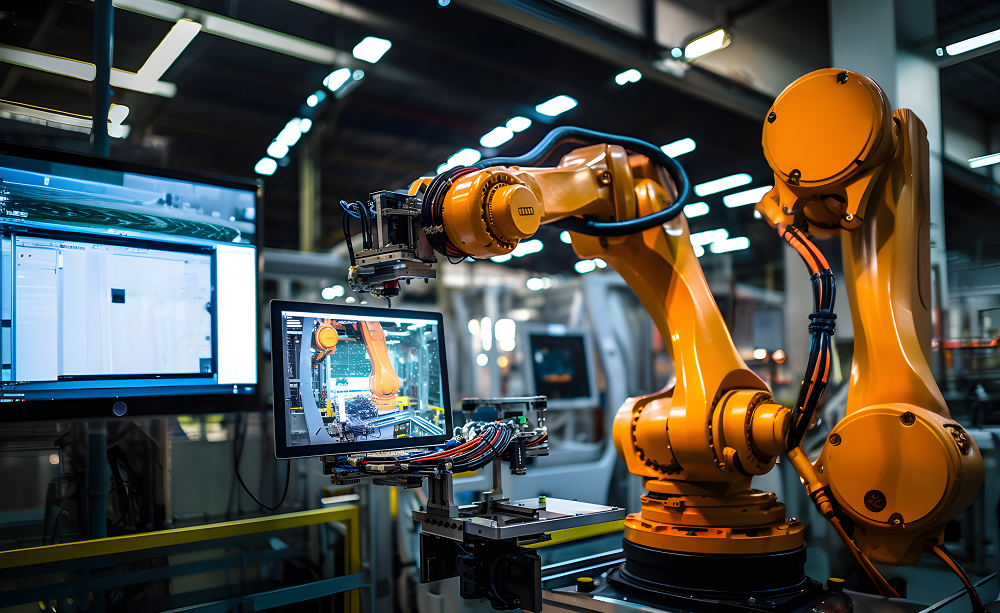The idea that “time is money” defines productivity in every industry — especially in manufacturing. After all, creating more output in less time is one of the primary ways to improve profit margins. Improving “floor efficiency” is the one of the best ways to increase that output.
As a catch-all KPI, floor efficiency measures how effectively a production area operates to generate output. In many ways, this one metric indicates the overall health of a metalworking operation. Taking steps to improve it through manufacturing optimization is critical to your operation’s success. Read on to learn what factors most impact floor efficiency, as well as what steps you can take to improve it.
What Influences Floor Efficiency
As an overarching KPI, shop floor efficiency is impacted by a number of factors, including:
- Shop layout: The arrangement of equipment, walkway positioning, and how production flows from one station to the next.
- Operator productivity: How efficiently employees are able to use equipment and produce parts. Training, working conditions, and motivation affect this metric as well.
- Machine downtime: Any time production is halted due to equipment breakdowns, maintenance, setup changes, or other unexpected events.
- Cycle time: The amount of time it takes to complete one production cycle, from start to finish. High cycle times decrease overall productivity and cut into revenue, indicating a wide array of potential inefficiencies.
- Production output: The actual output of products compared to the planned or desired output. If a facility consistently produces less than the intended quantity, it indicates a potential inefficiency.
5 Strategies for Manufacturing Optimization
One of the best ways to improve shop floor efficiency is to take a comprehensive look at your operation and optimize processes wherever possible. There are many variables and factors to assess, but the five most important strategies for manufacturing optimization are:
1. Improving Material Management
Carefully managing inventory as well as forecasting material requirements and production demands helps ensure the right materials are available when needed. Tracking material effectively minimizes production delays, reduces excess inventory, eliminates waste, improves procurement processes, and reduces carrying costs. Mitigating risk in this one area helps reduce the impact of setbacks in other categories, like labor efficiency or supply chain disruption.
2. Implementing Automation
Automation replaces manual labor in repetitive or complex tasks, both on the shop floor and in the management office. Procurement and inventory management software can enable teams to improve material management as mentioned above, while automated machinery can increase the speed, accuracy, and consistency of production processes on the floor. Automating tasks like assembly, inspection, and data collection can dramatically increase production volumes without any compromise in quality. Automating even a few tasks can improve shop floor efficiency and free up workers for more valuable tasks.
3. Cross-Training Employees
When employees can fill in for one another during absences or peak demand periods, it minimizes production disruptions and enables even greater process optimization. Cross-training employees allows them to take on more advanced work and generally operate with greater flexibility since individuals can perform more tasks. Cross-training has also been shown to enhance employee engagement and job satisfaction, leading to a more motivated and efficient workforce.
4. Investing in Advanced Equipment
Installing newer and more advanced machinery is a great way to directly increase precision, speed up cycle times, and add improved and more complex capabilities to your operation. Equipment like 5-axis machines enable more complex part machining in fewer setups, reducing overall production time. The latest generation of modular workholding decreases setup times and secure parts more effectively, reducing the risk of errors. Better cutting tools improve cutting efficiency and tool life, reducing downtime for tool changes. These collective improvements lead to increased output, better part quality, and reduced costs per unit.
5. Upgrading Cutting Fluid
Beyond lubricating and cooling cutting tools and workpieces, cutting fluid touches every aspect of an operation and plays a critical role in productivity and efficiency. Upgrading to more advanced formulas can reduce friction, enhance heat dissipation, and improve tool life, resulting in less machine downtime and improving floor efficiency. The improved machining conditions also improve finish quality and reduce the need for time-consuming rework or scrap.
TRIM®: The Key to Manufacturing Optimization
Upgrading to a high performance cutting fluid can generate incredible cost savings and greater efficiency, but not all advanced fluids are equal. TRIM® cutting fluids by Master Fluid Solutions have some of the highest quality formulations in the industry, spurred by more than seven decades of research and innovation. With low foam for uninterrupted operation, versatile material compatibility, and long sump, life TRIM MicroSol® 685XT is specifically designed to improve shop floor efficiency. Charge your sump with a free trial of 685XT and experience the difference with TRIM yourself.

